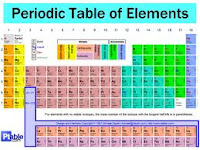Mostly for my own
satisfaction, in my last couple of posts I have written of what is known about
the beginnings of our Universe in the 'Big Bang'; how the elements were formed in Supernova
explosions of huge early stars that ejected clouds of interstellar dust called
nebulae; and finally the formation of our sun and its solar system in one such
nebula. At the end of that last post I promised that in this one, I would
summarize what is known about how life got started on Earth. I will keep that
promise but it’s going to take a couple of postings to do so.
For those who may regularly
visit my site, you will have noticed that, for the first time in 2 ½ years I
have missed my self-imposed Sunday morning deadline this week. The main reason was
that as I researched the topic of the origin of life on Earth, I was on a very
steep learning curve and on Sunday, I still had a lot to understand before I
was ready to write anything on such a momentous topic. It’s been a fascinating
journey and I’ve enjoyed the experience so much I didn’t want to stop until I
was satisfied I had a pretty good grasp of the subject.
So picking up the saga from the last posting where
we left a molten Earth to cool and to form and reform the Earth’s continents, around
4 billion years ago, most molecules were probably moving slowly enough that
when they collided, they interpenetrated and reacted chemically by exchanging
or sharing their surface electrons. Constant volcanic eruptions would have
released huge clouds that mostly contained water vapour, and carbon dioxide [CO2],
with lesser amounts of methane [CH4], sulfur dioxide [SO2],
nitrogen, carbon monoxide [CO], ammonia [NH3], hydrogen sulfide [H2S]
and others; gases that contained all the main elements essential for life.
 |
| Miller-Urey experiment |
The water vapour condensed and rained
down in torrential storms that created the oceans while frequent lightening flashes
helped cause the evolution of Chemistry to create ever more complex organic molecules. The experiment performed in
1953 by Miller and Urey was the first to prove that molecules of life
like amino acids were formed in this manner. This important discovery inspired
a multitude of further experiments that in turn produced an amazing variety of
the molecules of life - like the nucleotide base, adenine for instance, which is one of the
most important organic molecules for life as we know it today. Adenine is an
integral part of DNA, which is found in every cell and spells out the genetic
code used for directing the chemistry of cellular life. Adenine and similar
nucleotide bases are found also in RNA, a smaller molecule that actually reads
the DNA code and is the catalyst that performs the chemistry that it dictates.
We have
known for many years that life depends on chemical reactions to exist and that life
itself is a special form of chemistry in which the reactions are self-contained
and self-sustaining and that they lead to their own replication and therefore
growth. So when we think of the origin
of life, we see that the organic molecules involved in the chemistry of life were present; there were the abundant sources of energy available to push chemistry between them toward ever more complex interactions, and it is in the evolutionary nature of phenomena of many natural emergent events that have occurred on Earth that some form of primitive life would have evolved. By its very nature however its origins could leave us no fossil record and so we are left to speculate until life can be started, with the right conditions and compounds, in the laboratory.
This week
I’ve enjoyed not feeling the constraint – self imposed though it may have been – of having to meet a deadline on Sundays so have decided to just post when I have found something new and interesting that I feel compelled to write
about. I’ll be back soon with more on
what is known about the beginnings of life on our planet. Rie






